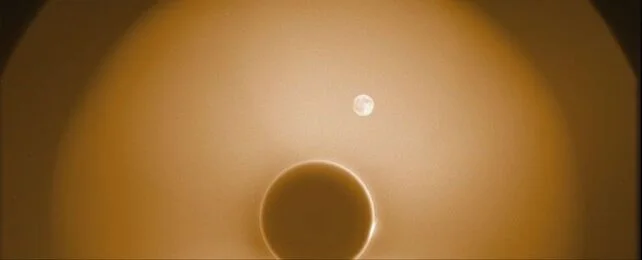
NASA’s PUNCH Mission Unveils Stunning 3D Views of Solar Winds with Rainbow Colors
Get ready to witness the Sun's invisible breath like never before! NASA's PUNCH (Polarimeter to Unify the Corona and Heliosphere) mission has just released its first images, providing unprecedented 3D views of the solar wind. This groundbreaking achievement is set to revolutionize our understanding of space weather and the Sun's influence on our solar system. The colorful visuals, captured using polarized light, reveal the hidden dynamics of the corona and its transition into the solar wind.

Launched on March 11, 2025, PUNCH consists of four small, coordinated spacecraft designed to image the solar corona and the solar wind in three dimensions. This mission marks a significant leap forward, providing scientists with a new tool to study space weather and its effects on Earth and other planets.
Unique Imaging Technique: The mission employs a unique technique called polarized light imaging. By measuring how sunlight scatters off particles in space, PUNCH creates maps of the solar wind's motion, offering a colorful and data-rich view of this phenomenon.
First Images: The initial images, captured on April 16 and 18, 2025, showcase the mission's capabilities with striking detail. The WFI-2 instrument captured a rainbow-colored view of the zodiacal light, a faint glow from dust orbiting the Sun. This image reveals the polarization of light, helping scientists understand the angle and degree of polarization. The location of the Sun is marked with a star symbol.

Other instruments have also captured stunning images. The NFI (Narrow Field Imager), a coronagraph that blocks out the Sun's bright light, captured an image of the new Moon on April 27, 2025. This image helped the PUNCH team confirm that the Moon will not obscure NFI's view. Meanwhile, the WFIs (Wide Field Imagers) reveal the faint zodiacal light and the constellations of Hyades and Pleiades.
PUNCH's Four Satellites: PUNCH comprises four satellites with distinct roles. One satellite houses the Narrow Field Imager (NFI), while the remaining three are equipped with Wide Field Imagers (WFIs). Together, they aim to stitch together a wide-angle view that captures both the inner corona and the faint outer reaches of the solar wind.
Why This Matters These early images are crucial to ensure PUNCH's cameras are in focus and functioning correctly. As the mission progresses, scientists will calibrate the instruments' views, bringing more illuminating details of the Sun's corona into focus.
The PUNCH mission is not only revolutionizing our view of the Sun but also offers a glimpse into the intricate dynamics of space weather. What breakthroughs can we expect from this mission and how this will help protect our planet from solar events? Leave your thoughts and predictions in the comments below!